 A major clean-up operation has begun this morning in the western part of County Donegal after heavy sudden rainfalls caused flash flooding in the Gweedore area (archive photo above) on the Atlantic coast yesterday.
A major clean-up operation has begun this morning in the western part of County Donegal after heavy sudden rainfalls caused flash flooding in the Gweedore area (archive photo above) on the Atlantic coast yesterday.As I live at the other end of the island of Ireland, I only heard of the freak weather conditions in Co. Donegal yesterday evening. The brief entry I then wrote about it (see below) late at night was the last thing I did before going to bed. I always like to keep people informed about Ireland and what is going on here.
When I came back on-line this morning I was quite surprised to notice that more than a hundred visitors have been reading my brief report about the flash floods in Co. Donegal in less than eight hours. This is well above the average, and there was also a specific request for more detailed information on this matter. I am happy to oblige.
While most of Ireland has enjoyed a very nice summer day with blue skies, bright sunshine and temperatures well above 20 degrees Celsius yesterday, a very rare and unusual freak weather condition developed over the Atlantic coast, close to the Gweedore area of Co. Donegal, in the far Northwest of Ireland. (Such is known as a 'micro weather system' and is most likely to occur at sea or in places close to the sea.)
Without much warning the skies opened over Gweedore yesterday afternoon and vast amounts of water poured down with amazing speed, totally overwhelming drainage systems and turning local rivers and brooks into wild torrents.
Two rivers in Bunbeg burst their banks and caused wide-spread flooding, and two landslides were also registered in the area as a result of the freak weather conditions.
Although Met Éireann (Ireland's national meteorological office) did mention the "possibility of sudden rainfalls and flooding in Co. Donegal" in the national forecast on their website, most of the people in the Gweedore area were completely surprised by the sudden weather change. (Regular use of websites is not very common yet in rural Ireland...)
 Gweedore - whose Irish name is Gaoth Dobhair - is a Gaeltacht (community with an Irish-speaking majority) right in the central part of the long and scenic Atlantic coast of Co. Donegal.
Gweedore - whose Irish name is Gaoth Dobhair - is a Gaeltacht (community with an Irish-speaking majority) right in the central part of the long and scenic Atlantic coast of Co. Donegal.The community is formed by five main town lands (or villages) - Bunbeg, Derrybeg (photo above), Dunlewey, Crolly and Bloody Foreland (photo below left), which is named after the famous landmark cape nearby. The town is also close to Mount Errigal, Donegal's highest mountain (which is visible in the photo on top).
 With a population of over 4000 Gweedore is actually the largest Gealtacht parish in Ireland. It is also home to the northwestern regional studios of the national Irish language radio service Raidió na Gaeltachta.
With a population of over 4000 Gweedore is actually the largest Gealtacht parish in Ireland. It is also home to the northwestern regional studios of the national Irish language radio service Raidió na Gaeltachta.Yesterday's flash floods have caused serious damage to more than twenty houses in the area, around a dozen business premises, and many roads and bridges, mostly in the town lands of Derrybeg and Bunbeg.
Fortunately no-one was killed or injured during the ordeal, but some people in the area came quite close to being hurt. Only the quick and determined actions by Gardai and local emergency services prevented a catastrophe.
Two people had to be rescued by the Coast Guard after their house, which is situated in a hollow, was flooded by water up to eight feet high. Later a woman and her two-year-old daughter had to be rescued by boat from the second floor of a building in Bunbeg after water levels had reached 20 feet there. And residents of a nursing home had to be moved as well to keep them safe from the flooding.
 Several local businesses were badly affected.
Several local businesses were badly affected.Customers and staff trapped inside by the rising waters had to be led from the premises by Gardai, firemen and members of the Civil Defence Force who had built improvised board-walks across flooded car parks. Many local roads were closed as the waters continued to rise and rapidly engulfed the whole community (photo above right).
By this morning the flooding has subsided and Gweedore is predominantly again an area of dry land. But many spots around the district are still affected, either by pools of water or by deposits of mud.
 The officials from Donegal County Council are out in force in the area now, to inspect the damage done by the floods and by the two landslides that followed.
The officials from Donegal County Council are out in force in the area now, to inspect the damage done by the floods and by the two landslides that followed.Currently the main concern of the County Engineer and his team is the condition of the numerous bridges in the area, many of which are now regarded as 'unsafe'.
How long it will take to get Gweedore 'back to normal' is hard to say and at this moment in time anyone's guess.
Sean Campbell, the Senior Assistant Chief Fire Officer of Donegal Fire Service, described the weather as "freakish" and "extremely unusual for the area and this time of the year".
However, sudden torrential rainfalls with subsequent flash flooding is not completely unheard of in Co. Donegal. Only a little over two years ago - on June 12th, 2007 - a 'micro weather system' similar to the one encountered by Gweedore yesterday hit the town of Raphoe, in the eastern part of Co. Donegal.
It started with 90 minutes of "the worst thunder storm in the area in living memory" and caused serious damage through wide-spread flooding. But Raphoe has had problems with floods before. Two years ago local people said that it had been "the second flood to hit the town in the past nine months, and the sixth in the past ten years". (On the same day sudden rainfalls also caused flash flooding of lesser dimensions in the Donegal towns of Letterkenny and Milford.)
"The problem is that the [County] council is spending its time reacting to the flooding. This is a recurring problem and we need a more proactive approach," the local Sinn Féin Councillor Tony McDaid had told the media then.
It seems that Donegal County Council, which drastically reduced its qualified local workforce at the end of last year (see my entry of November 21st, 2008), is still playing catch-up with the problem. As much as yesterday's weather conditions in Gweedore were "freakish" and thus rare, serious flooding occurres in Co. Donegal quite regularly.
One can only hope that the newly elected County Councillors and their officials will learn lessons from yesterday and prepare their county - one of the most scenic and beautiful in the whole of Ireland - better for such 'micro weather systems' that are building up over the Atlantic and can hit Donegal at any time.
They also need to improve their communication skills. Neither yesterday nor today (until five minutes before I posted this entry) was the situation in the Gweedore area mentioned with a single word on the website of Donegal County Council.
The Emerald Islander


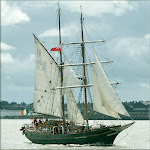

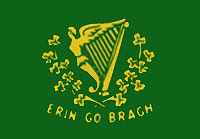












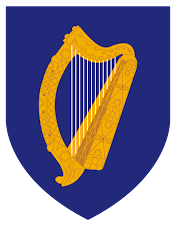






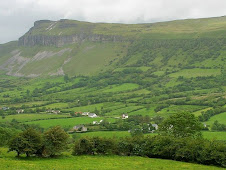
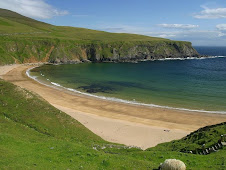













No comments:
Post a Comment